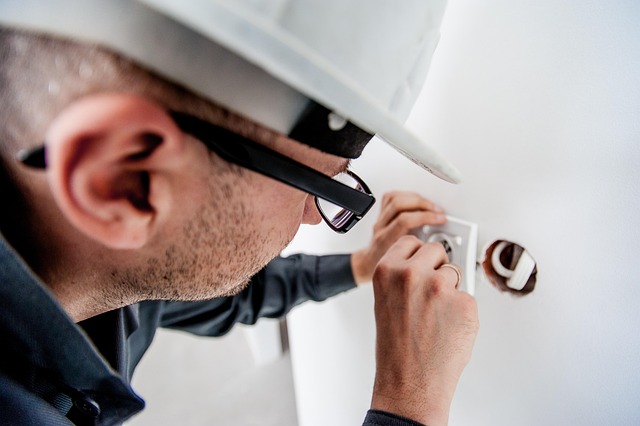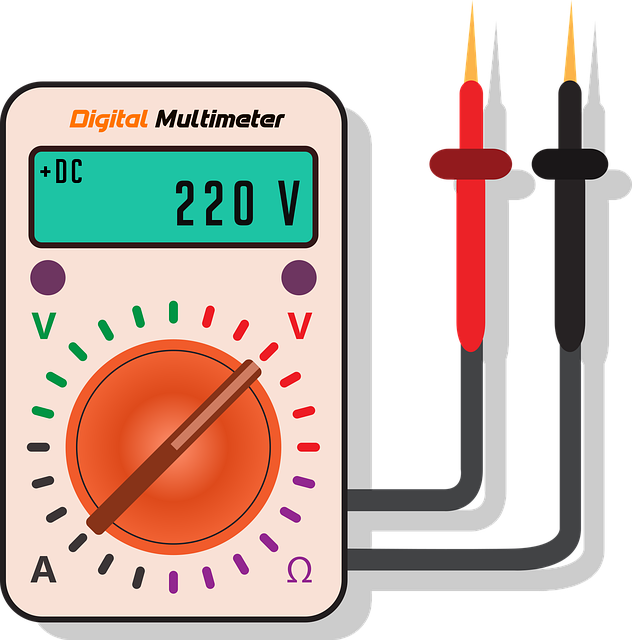Electricians need to understand the limitations of traditional fuses and switch to modern circuit breakers for superior reliability, safety features, and improved electrical efficiency. When replacing old fuses, prioritize safety by de-energizing circuits, wearing insulated gear, inspecting wiring, grounding systems temporarily, and ensuring only qualified professionals handle the task. Follow key installation tips like proper sizing, checking voltage/amperage ratings, grounding the circuit breaker correctly, using appropriate tools, and testing with a voltage tester to prevent overloading, fire hazards, electric shocks, and ensure safe operation.
Looking to upgrade your home’s electrical system? It’s time to say goodbye to old fuses and embrace modern circuit breakers. This comprehensive guide explores why this switch is beneficial, delving into the features and safety advantages of contemporary circuit breakers. From understanding the limitations of traditional fuses to essential installation tips for electricians, you’ll discover the key aspects involved in making this intelligent upgrade.
- Understanding Old Fuses and Their Limitations
- The Modern Circuit Breaker: Features and Benefits
- Safety Considerations When Replacing Fuses
- Installation Tips for Circuit Breakers by Electricians
Understanding Old Fuses and Their Limitations

Understanding old fuses and their limitations is crucial for any electrician looking to modernise electrical systems. Traditional fuses, once a standard in home wiring, were designed to protect circuits from overcurrent events by melting and breaking the circuit. However, they have several drawbacks. Firstly, they require frequent replacement as they are one-time use components. Secondly, they don’t offer the same level of protection against repeated power surges or short circuits as modern circuit breakers. Additionally, fuses often require specific types and values to be selected for each application, making them less adaptable than their newer counterparts.
Moreover, old fuses can be hazardous in case of frequent tripping, leading to potential safety risks and inconvenience. Unlike fuses, circuit breakers can be reset after a trip, making them more reliable and cost-effective in the long run. An electrician considering replacing old fuses with modern circuit breakers should also take into account the enhanced safety features and improved electrical efficiency that come with this upgrade.
The Modern Circuit Breaker: Features and Benefits

Modern circuit breakers are a significant upgrade from old fuses, offering several key features and benefits that make them indispensable tools for any electrician. Firstly, they provide enhanced safety by automatically cutting off power when an electrical overload or short circuit is detected, preventing potential fires and harm to property and people. This self-protective mechanism is a vast improvement over traditional fuses that require manual replacement after tripping.
Additionally, circuit breakers are known for their longevity and reliability. They can handle higher current loads without deteriorating quickly, ensuring longer lifespan and more frequent use without compromise. Their modular design also allows for easy installation and replacement, making them a practical choice for electricians. These advantages make modern circuit breakers an essential component in today’s electrical systems, ensuring safety, efficiency, and peace of mind for both homeowners and professionals alike.
Safety Considerations When Replacing Fuses

When replacing old fuses with modern circuit breakers, safety should always be the top priority for any electrician. Fuses and circuit breakers serve similar functions in protecting electrical systems from overcurrent events, but they operate differently. While fuses are designed to blow and need replacement after a single trip, circuit breakers can be reset multiple times. Electricians must ensure proper de-energization of the circuit before beginning work to prevent accidental shocks or fires.
Proper safety gear, including insulated gloves and protective eyewear, is essential. Additionally, electricians should visually inspect the existing wiring for any signs of damage or wear before installing new circuit breakers. Grounding the electrical system temporarily can also mitigate risks during the replacement process. Remember, only a qualified electrician should handle such tasks to guarantee both the safety of residents and the reliability of the electrical system.
Installation Tips for Circuit Breakers by Electricians

When replacing old fuses with modern circuit breakers, electricians should follow some key installation tips for optimal safety and functionality. Firstly, ensure proper sizing of the circuit breaker to handle the electrical load of the circuit it will protect. Misalignment can lead to overloading and potential fire hazards. Electricians should also check the voltage and amperage ratings to match the new circuit breaker exactly.
Secondly, grounding is crucial for circuit safety. Properly ground the circuit breaker to prevent electric shocks and ensure a safe operating environment. Third, use the appropriate tools for installation to avoid damage to the equipment or the electrician’s tools. Lastly, test the newly installed circuit breaker with a voltage tester to confirm its functionality before reconnecting any devices to the circuit.
Upgrading from old fuses to modern circuit breakers is a smart move for any homeowner or electrician. By embracing this change, you gain enhanced safety features, improved functionality, and better protection against electrical overloads. When done correctly, as outlined in the steps provided, it ensures your home’s electrical system is safe, efficient, and future-proof. Remember, a qualified electrician is key to ensuring these replacements are made correctly, upholding the highest standards of safety and performance.
